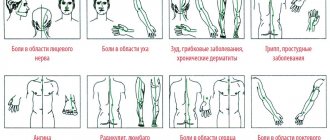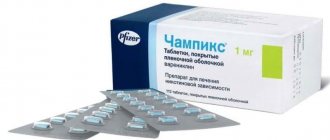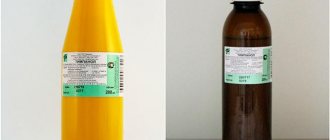pharmachologic effect
The medication is used to treat diseases of the vascular system. After use, blood circulation in the capillaries improves. The arteries dilate, which improves peripheral pressure.
The medication has an antiphlogistic effect . After taking it, swelling is eliminated and capillary permeability is reduced.
Thanks to the selected composition, the muscle frame is strengthened. Tissue restoration occurs and the membrane is saturated with oxygen by improving the condition of the circulatory system.
Side effects
This medication can only be used after visiting a doctor . For this reason, the medicine is usually well tolerated by patients. Very rarely, third-party reactions to the medication may occur:
- headache,
- itching,
- lightheadedness
- vomit,
- skin rashes of an allergic nature,
- diarrhea,
- irritation of the nasal mucosa.
In order to avoid exacerbations when any side effects occur, it is necessary to stop using the medication.
Directions for use and doses
According to the instructions for use, Anavenol tablets should be taken orally after eating. Swallow the tablets completely without biting them. Drink plenty of liquid.
The initial dosage of the medication is 2 tablets three times a day . After 7 days, the dose is reduced to 1 tablet three times a day .
Before using the drops, they must be diluted in liquid. Add 20 drops of the drug to a glass of water. Drink three times a day. After a week, reduce the frequency of administration to twice a day. The course of therapy in both cases is 2-3 months .
Anavenol - instructions for use, analogues, price and reviews
The site provides reference information for informational purposes only. Diagnosis and treatment of diseases must be carried out under the supervision of a specialist. All drugs have contraindications. Consultation with a specialist is required!
Instructions for use
Compound
Anavenol contains substances derived from ergot (dihydroergocristine), horse chestnut (esculin) and odorous mint (rutoside). All these plants are used in traditional medicine to treat vein diseases.
Substances with active medicinal effects are mixed in Anavenol with auxiliary components (corn starch, lactose, etc.).
pharmachologic effect
All components included in the drug improve blood circulation in small vessels, especially in the vessels of the legs.
Dihydroergocristine dilates small arteries (arterioles) and increases the elasticity of venous walls.
Esculin and rutoside have an anti-inflammatory and anti-edematous effect on blood vessels, reducing their permeability.
Thanks to the properties of its components, Anavenol prevents blood stagnation in the small vessels of the legs and is effectively used in the treatment of chronic venous insufficiency.
Drug interactions
Certain drugs, when taken simultaneously with Anavenol, weaken its effect (norepinephrine, galazolin, methyldopa, etc.)
Taking Anavenol together with reserpine causes a strong decrease in blood pressure.
Therefore, if your doctor prescribes Anavenol for you, tell him about other medications you are currently taking.
Indications for use
Side effects
Contraindications
The use of Anavenol is contraindicated in:
- any bleeding;
- individual hypersensitivity to this drug, or to one of its components;
- The patient's age is less than 15 years.
In addition, Anavenol is prescribed with caution if the patient suffers from severe kidney and liver diseases, low blood pressure, heart failure, bradycardia (slow pulse - less than 60 beats per minute).
Anavenol is also prescribed with caution to persons whose work requires a quick psychomotor reaction, composure, concentration - drivers of a car or other type of transport, workers on machines of various modifications, as well as people working at heights.
Use during pregnancy and lactation
Since there have been no special studies on the effect of Anavenol on the development of the fetus in the womb, this drug is prescribed to pregnant women only in the second half of pregnancy. During this period, the risk of developing congenital pathology decreases, because the fruit is already fully formed. In the early stages of pregnancy, Anavenol is not prescribed.
Anavenol is also not prescribed to women who are breastfeeding.
Method of administration and dose. Overdose
During the first week of treatment, the doctor usually prescribes an increased dose of Anavenol: 2 tablets (2 dragees) 3 times a day; or 20 drops 4 times a day.
Next, switch to a maintenance dose: 1 tablet (1 tablet, 20 drops) 3 times a day.
In case of overdose, any of the above-described side effects appear (if these effects already existed, they intensify). The patient must stop taking Anavenol, perform gastric lavage and immediately consult a doctor (if necessary, call an ambulance).
Release form
Reviews
Judging by patient reviews, Anavenol significantly improves the condition and well-being of patients with varicose veins and thrombophlebitis. The effect of the drug is especially effective in the initial period of the disease, with “tired legs” syndrome, as well as during the healing of trophic ulcers on the legs.
Some patients complain of muscle weakness, pain in the legs, and dizziness when treated with Anavenol: “My daughter was prescribed Anavenol. She took it as the doctor prescribed. A week later, severe nagging pain in my legs began.” “After taking Anavenol, my head began to feel very dizzy, and my legs felt like they were numb.”
Prices for Anavenol in various pharmacies range from 120-180 rubles. per package (60 tablets, or 60 dragees, or a bottle of drops containing 25 ml).
Anavenol can only be purchased with a prescription.
Reviews
Lolita Abramova, 37 years old , Petropavlovsk-Kamchatsky
“I began to notice that in the evenings there was fatigue in my legs and swelling. This brings some discomfort. I went to the doctor and was diagnosed with pre-varicose vein syndrome. I was very scared, so I started my course of treatment as soon as possible. The doctor prescribed this drug to me. After three days of use I noticed improvements. The swelling went away instantly and doesn't bother me anymore. I recommend."
Viktor Pavlov, 49 years old , Moscow
“Varicose veins have been bothering me for a long period of time. I tried a lot of medications, ointments, gels. There were improvements, but not long lasting. I turned to a phlebologist who advised me Anavenol. I read reviews on the Internet and decided to start treatment. I was convinced of its effectiveness. It's a pity that I found out about this product so late. It helped me, so I recommend it to everyone. But you should still consult your doctor before taking it.”
Contraindications for use
Like other venotonic drugs, Anavenol is used to treat chronic venous diseases, including:
- For the treatment of manifestations of varicose veins (a disease characterized by pathological expansion of the veins of the lower extremities, incompetence of venous valves and disruption of normal blood flow);
- To eliminate the manifestations of prevaricose syndrome;
- To eliminate the consequences of deep vein thrombosis;
- For chronic venous insufficiency;
- Traumatic lesions of veins;
- Post-traumatic disorders that develop against the background of prolonged immobilization of the lower extremities and are characterized by impaired blood microcirculation;
- Trophic disorders of soft tissues, which are accompanied by diabetes mellitus, angiopathy and thrombophlebitis (in particular, disorders of the soft tissues of the lower leg with subsequent formation of ulcers on them).
The instructions for use of Anavenol indicate a number of contraindications to the use of the drug. These include:
- Increased individual sensitivity to one or more components of the product;
- Bleeding of any etiology;
- Age (the drug is not prescribed to persons under 15 years of age);
- First trimester of pregnancy;
- Breastfeeding period.
The following categories of persons may be prescribed the drug with caution:
- With severe kidney and liver diseases;
- With low blood pressure;
- With heart failure;
- With bradycardia (i.e. patients whose pulse does not exceed 60 beats per minute);
- Their work requires a quick psychomotor reaction, a high level of composure and concentration.
The main indications for the use of this medication are:
- prevaricose syndrome;
- venous insufficiency;
- postthrombotic syndrome;
- thrombophlebitis;
- trophic ulcers of the leg;
- circulatory disorders caused by injuries.
Despite its effectiveness, according to the instructions, Anavenol is prohibited when:
- hypersensitivity to individual substances in the composition;
- bleeding;
- pregnancy;
- breastfeeding;
- under the age of 15;
- organic damage to the liver.
What is the presented medication prescribed for? As a rule, it is prescribed during complex therapy of varicose veins, prevaricose syndrome and chronic venous insufficiency.
Among other things, the mentioned drug is successfully used in the treatment of trophic ulcers in the legs, thrombophlebitis and post-traumatic microcirculatory disorders (that is, the consequences of prolonged immobility of the lower extremities).
When is it prohibited to use the drug "Anavenol"? The instructions for use of this drug state that it should not be prescribed to those patients who have hypersensitivity to the elements of the drug, as well as to those with a tendency to bleed. In addition, the medication is contraindicated in children under 15 years of age.
It should also be noted that it is highly undesirable to take the drug “Anavenol” in the 1st trimester of pregnancy and while breastfeeding.
Doctors recommend the drug for the following conditions:
- syndromes - pre-varicose and post-thrombotic;
- phlebeurysm;
- venous insufficiency.
Doctors recommend using Anavenol to treat varicose veins.
The drug helps with deep vein thrombosis.
The medication helps with blood microcirculation disorders that develop after injuries.
The medicine is part of complex therapy for trophic ulcers of the leg and deep vein thrombosis. The medication helps with blood microcirculation disorders that develop after injuries.
For patients suffering from frequent bleeding and problems with blood clotting, the drug is contraindicated. It is not prescribed if you are intolerant to the components present in the drug.
DETAILS: Viprosal B price in Tomsk from 220 rubles, buy Viprosal B, reviews and instructions for use
In the presence of bradycardia, the use of Anavenol is possible, but treatment should be carried out under the supervision of a physician. Supervision by a specialist is also necessary when treating those patients who have been diagnosed with chronic heart failure and arterial hypotension.
In the presence of bradycardia, the use of Anavenol is possible, but treatment should be carried out under the supervision of a physician.
According to the instructions, Anavenol is recommended for use by patients diagnosed with:
- impaired blood flow;
- dilatation of the superficial veins of the lower extremities;
- blood clots in deep veins;
- mechanical damage to veins;
- trophic tissue disorders, including those caused by diabetes mellitus or thrombophlebitis, angiopathy;
- post-traumatic problems with microcirculation;
- the need for the prevention of varicose veins.
Most patients have no problems with Anavenol, but you should avoid the drug:
- If you are prone to allergies or hypersensitivity to the components of the drug.
- During adolescence.
- If there is damage to the skin (bleeding).
Side effects
The drug Anavenol is quite safe.
- allergic skin rashes;
- the appearance of heavy bleeding during the menstrual and intermenstrual periods;
- headache, dizziness, fatigue, nausea, vomiting, diarrhea;
- a rush of blood to the nasal mucosa is possible.
If these symptoms are diagnosed, you should immediately consult a doctor.
Tablets are used in the presence of the following diseases:
- prevaricose syndrome;
- phlebeurysm;
- chronic venous insufficiency;
- postthrombotic syndrome;
- thrombophlebitis;
- trophic ulcer of the leg;
- microcirculation disorders as a result of injuries.










